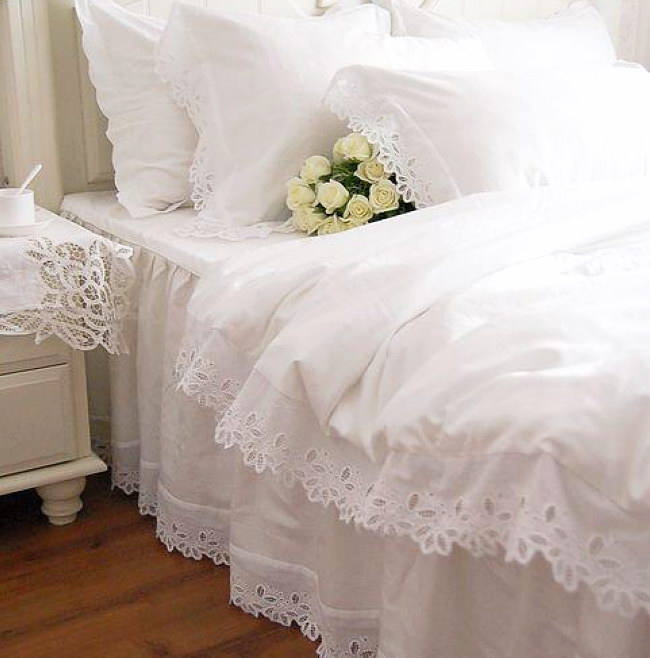I'll preface this by saying I have a big freezer and I use it all the time. I use either Tupperware containers, ziplock bags or vacuum sealed bags for food storage. They all stack neatly in the freezer and can both be labelled easily. Ziplock bags and vacuum sealing are better - they take up less space than the Tupperware.
For fruit and veg I shop at a local orchard/market (late Sunday afternoon to get the best deals). I try to do a market shop once a fortnight, depending on what I can get and how fast the troops devour it.
With five of us to feed I buy everything I can in what most people would call bulk quantities. The saving from buying in quantity is not only in dollars but in time for me as well. One trip a fortnight to buy in bulk doesn't take any longer than it does to make a trip to buy just a few days' supply of fruit and veg. I save a lot of time buying larger quantities.
For example I buy:
Onions and potatoes by the bag. I pay no more than 60c/kg for onions for 10kg bag (the bag I bought last Sunday was just 40c/kg), the last lot of potatoes were 50c/kg for 20kg bag
Carrots are 30c/kg – I buy what the market guys call "horse carrots" – i.e. the seconds. They usually have the tip broken off or are too short/fat/long/thin. These I cut into rings, wedges and straws, blanch and freeze.
Cauliflower – have been cringing at the price lately and I'm so glad I grow our own. But it you have to buy your cauliflower remember it's a winter vegetable, so cheapest then. At the end of last winter our local fruit market had caulis for 80c each so even though I had some in the garden I bought 20. They were cooked, covered in cheese sauce and frozen in meal size containers. My kids will only eat it with cheese sauce.
Broccoli –Most of our broccoli is home-grown, but I found a great deal at the market and again froze it. Some of it I left without sauce (I use it in a salad I make), the rest went into cheese sauce.
Cucumbers – these are so easy to grow. Two plants will keep the average family in cucumbers for the summer. Any excess you can share. If you buy them remember they don't keep long so you'll need to be able to share them, and look to pay no more than 30c each for them.
Capsicum – again if you don't grow your own, buy them by the carton from the market or your local greengrocer.
Celery – buy when it's $1 or less bunch. I do grow some celery, but it is slow and takes up garden space that can be used for other more expensive vegetables. I buy 12 bunches and slice and freeze for soups, stews and casseroles.
Spring onions – buy when 89c or less bunch. They are easy to grow but again take up space that can be used for other vegetables and I don't use a lot of them.
Eggplant – Easy to grow and perfect for Australian summers. If you can't grow them buy by the box. My kids like it crumbed with tomato sauce, I love moussaka which freezes really well too.
Cabbage – I grow mini cabbages as one is the perfect size for a meal for my family meaning not having to store half a cabbage and use it before it goes black. Cabbages take a lot of space in the garden so if you are short on space, they are really cheap whole from the market – last lot were $1.85 each.
Tomatoes – the real saver is to buy "sauce tomatoes" for about $4 - $5/box. Some are only good for sauce, some are still good for salads and sandwiches. Freeze whole (skin splits when they thaw, makes it easy to peel them) or make them into sauce.
Lettuce – grow some in tubs, buy in carton from market.
Fruit – apples and pears I buy straight from the orchard, ditto stone fruits, by the box. Pay about $6/box. We also have an apple tree – this year I have made up 35 packets of pie apple and put in the freezer, ready for pies, strudels and sponges.
Oranges, mandarins, grapes, rock melon – straight from grower in Mildura or by the case from the market. You can get cases of 10 rockmelon for $5 at closing time.
Watermelon – buy whole from the market.
Strawberries and mushrooms – easy to grow in styro foam boxes. They are too expensive to buy otherwise.
When it comes to feeding my family fresh food I try to buy the vegetables and fruit in season, it is always much cheaper.
If I see something I fancy and am sure I will use and it's cheap enough then I will buy it.
A reported recently questioned me (in great detail) about how I could feed my family so well and keep the bill down. Her family is the same size as mine, her kids are around the same ages as mine. Her grocery bill is $400 a week, mine is under $100.
When I explained, in great detail, how I did it her answer was short: “I couldn't be bothered with all that comparing and running around.”
My response was “A little extra effort once will pay off in huge savings all the time. The choice is yours."








































.jpg)


